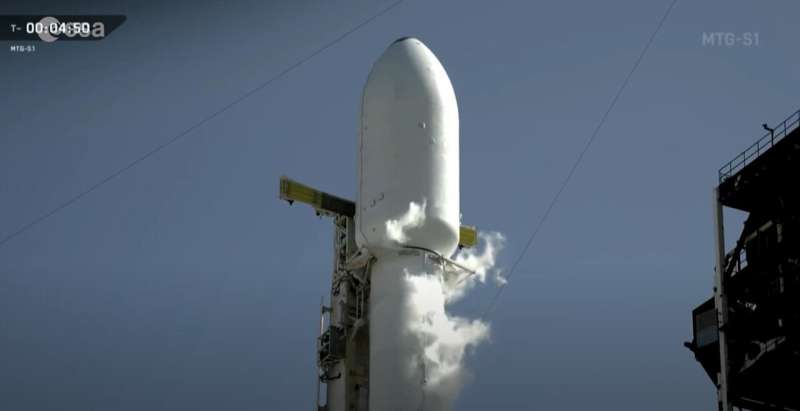On July 2, 2025, two groundbreaking meteorological missions were launched from Cape Canaveral, Florida, aboard a SpaceX Falcon 9 rocket. The Meteosat Third Generation Sounder-1 (MTG-S1) and the Copernicus Sentinel-4 missions, both developed with European partners, aim to address critical scientific and societal challenges through advanced Earth observation technologies.
The MTG-S1 satellite is set to revolutionize weather forecasting by providing unprecedented three-dimensional views of the atmosphere. This mission marks the deployment of the first European operational Infrared Sounder instrument, offering a new type of data product specifically designed for nowcasting severe weather events. Meanwhile, the Copernicus Sentinel-4 mission is poised to transform air quality monitoring across Europe by delivering hourly data from geostationary orbit using its ultraviolet, visible, and near-infrared light (UVN) spectrometer.
Advancements in Meteorological Technology
The launch of MTG-S1 and Copernicus Sentinel-4 represents a significant leap forward in meteorological technology. MTG-S1, the second satellite in the Meteosat Third Generation constellation, is expected to enhance the precision and timeliness of weather forecasts. Its Infrared Sounder instrument will enable meteorologists to capture detailed atmospheric profiles, crucial for predicting severe weather conditions such as thunderstorms and heavy rainfall.
According to the European Space Agency, the data from MTG-S1 will be instrumental in improving the accuracy of short-term weather predictions, which is vital for safeguarding communities and infrastructure against extreme weather events. This capability is particularly important in light of the increasing frequency and intensity of such events due to climate change.
Monitoring Air Quality from Space
The Copernicus Sentinel-4 mission, on the other hand, is set to offer a new perspective on air quality monitoring. Positioned in geostationary orbit, the satellite will provide continuous, real-time data on air pollution levels across Europe. This information is crucial for understanding and mitigating the impacts of air pollution on public health and the environment.
Experts believe that the hourly data provided by Sentinel-4 will allow for more accurate and timely air quality forecasts, enabling authorities to implement effective measures to reduce pollution and protect public health. The mission’s UVN spectrometer will track key pollutants such as nitrogen dioxide, ozone, and aerosols, providing a comprehensive picture of Europe’s air quality.
Implications for Europe and Beyond
The successful launch of these satellites underscores Europe’s commitment to leveraging space technology for societal benefit. As climate change and environmental degradation continue to pose significant challenges, the data provided by MTG-S1 and Sentinel-4 will be invaluable for policymakers, researchers, and environmental agencies.
Moreover, these missions highlight the importance of international collaboration in addressing global challenges. By working with European partners, the European Space Agency has demonstrated the potential of joint efforts in advancing scientific knowledge and technological innovation.
“The data from these missions will not only enhance our understanding of the Earth’s atmosphere but also provide critical insights for tackling climate change and improving public health,” said a spokesperson from the European Space Agency.
Looking Ahead
As MTG-S1 and Sentinel-4 begin their operational phases, the focus will shift to data analysis and integration into existing meteorological and environmental monitoring systems. The European Space Agency plans to work closely with national meteorological services and environmental agencies to ensure that the data is effectively utilized to enhance weather forecasting and air quality management.
The launch of these satellites marks a new era in Earth observation, with the potential to significantly improve our understanding of atmospheric processes and their impacts on the planet. As the data starts to flow, the world will be watching to see how these missions contribute to addressing some of the most pressing environmental challenges of our time.
